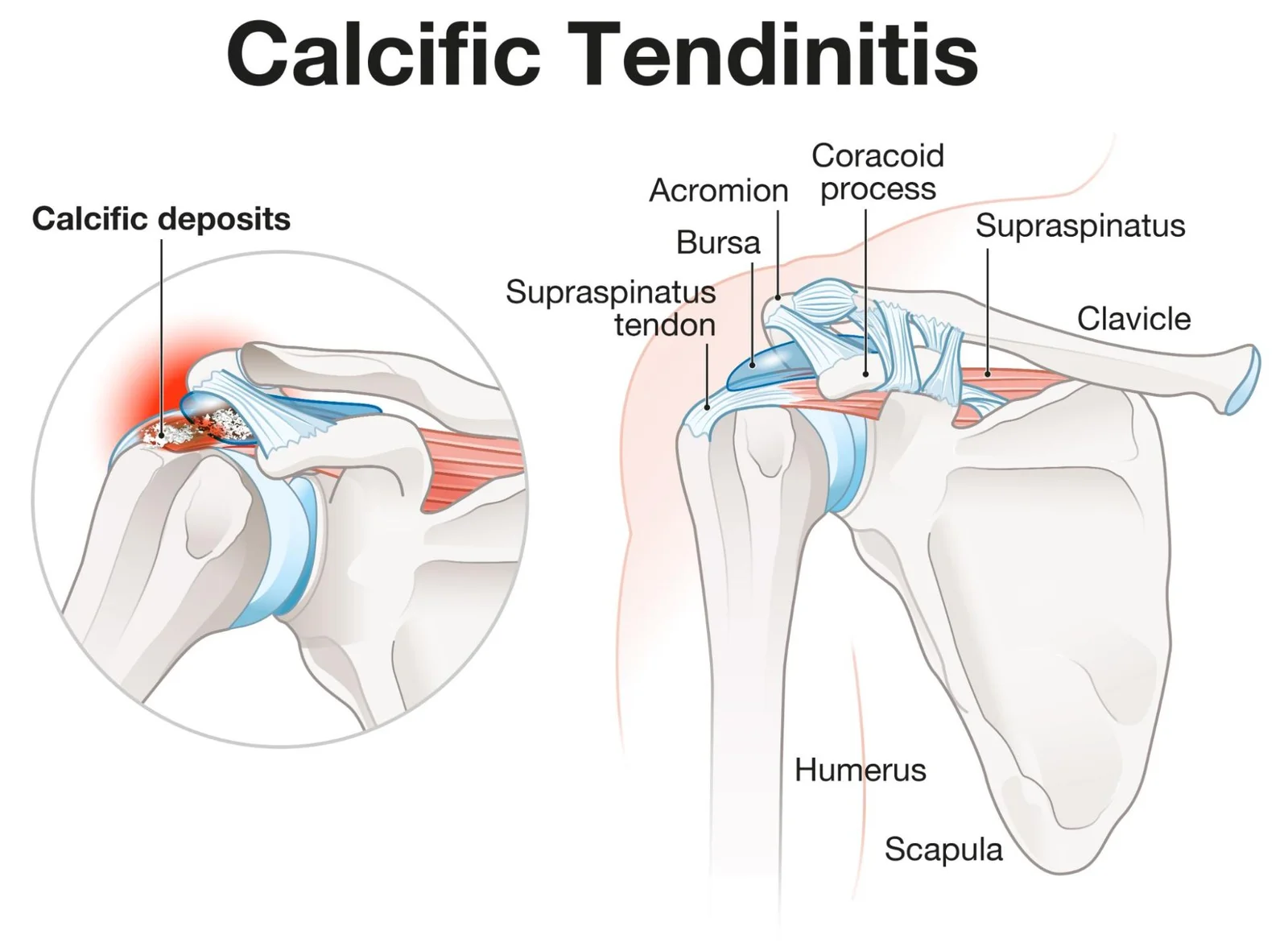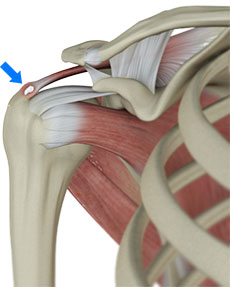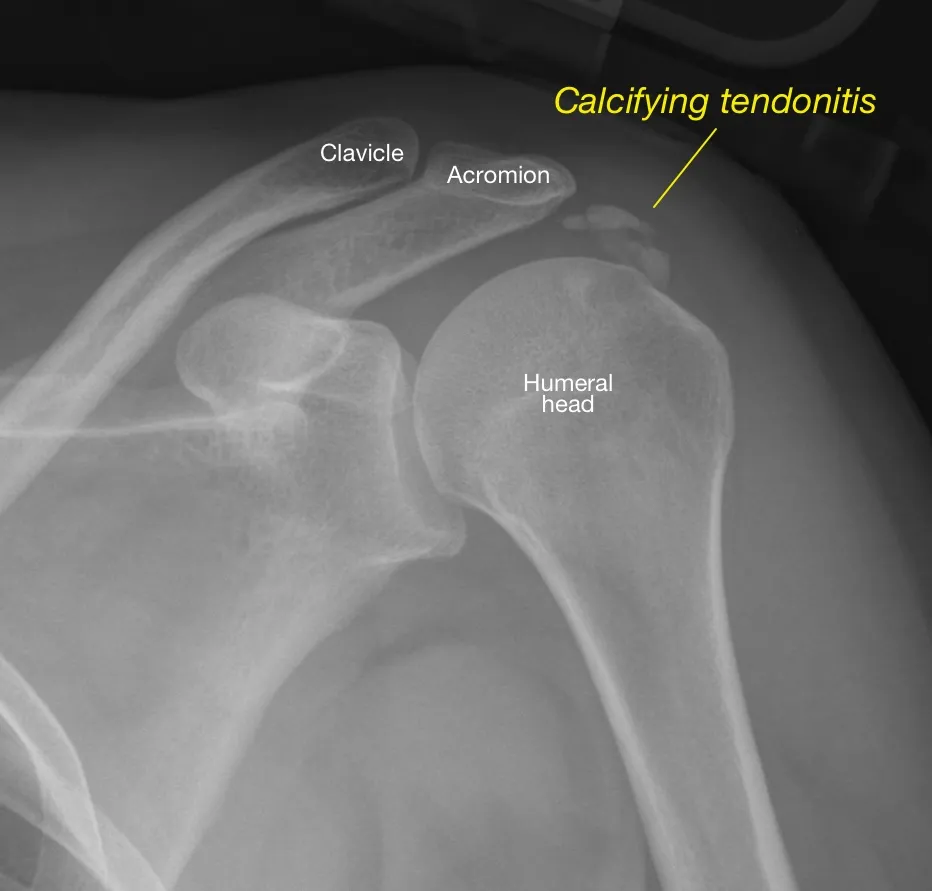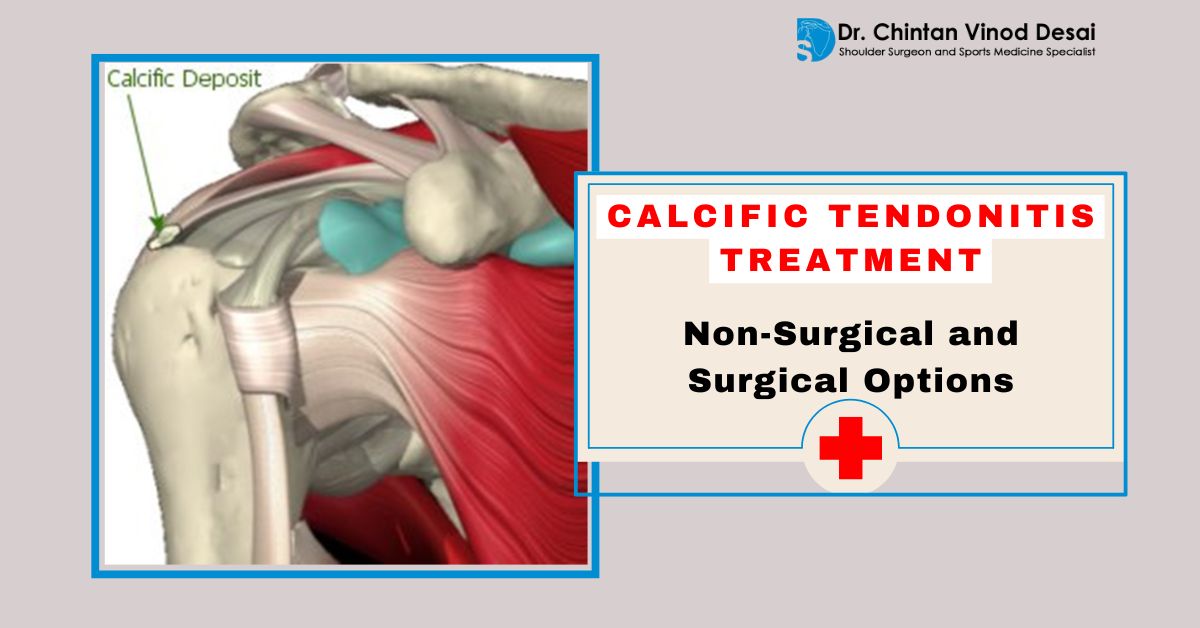Calcific Tendonitis Treatment In Mumbai
Calcific tendonitis is a painful shoulder condition caused by calcium deposits building up in the tendons of the rotator cuff.
This buildup triggers inflammation and discomfort, often limiting arm movement and disrupting daily activities.
The condition is common among people aged 30 to 60 and may appear without an obvious cause.
If you’re dealing with persistent shoulder pain, understanding your treatment options can help you recover effectively.
This blog explains both non-surgical and surgical treatments for calcific tendonitis available in Mumbai.
What is Calcific Tendonitis?
Calcific tendonitis occurs when calcium deposits form inside the tendons, usually in the rotator cuff, especially the supraspinatus tendon.

This condition often develops in three stages:
- Pre-calcific stage: The tendon changes, making it prone to calcium buildup.
- Calcific stage: Calcium starts to accumulate and causes pressure.
- Post-calcific stage: The body reabsorbs the deposits, which can be painful.
Symptoms include:
- Sudden or gradual shoulder pain
- Stiffness or limited range of motion
- Pain that worsens at night or during overhead movements
Diagnosis: What to Expect
If you experience shoulder pain that doesn’t improve with rest, consult a shoulder specialist.
Diagnosis typically includes:
- Physical examination: To check pain triggers and movement limitation.
- X-rays: To detect calcium deposits.
- Ultrasound or MRI: To view soft tissues and assess inflammation or tendon tears.
Early diagnosis improves outcomes, especially when the condition is caught before chronic damage occurs.
Non-Surgical Treatment Options in Mumbai
Most cases of calcific tendonitis can be treated without surgery. Mumbai offers several non-invasive therapies.

a) Rest and Lifestyle Modifications
- Avoid heavy lifting and overhead activities.
- Use a sling temporarily during flare-ups.
- Apply ice to reduce inflammation.
b) Oral Medications
- Non-steroidal anti-inflammatory drugs (NSAIDs) like ibuprofen help manage pain and swelling.
c) Physiotherapy
- Shoulder exercises strengthen the muscles and improve flexibility.
- Focused therapy helps maintain function and reduce stiffness.
d) Ultrasound-Guided Needling (Barbotage)
- A specialist uses ultrasound to locate calcium and insert needles to break it up.
- The area is flushed with saline, helping reduce the size of deposits.
- Minimally invasive and performed as an outpatient procedure.
e) Shockwave Therapy (ESWT)
- High-energy sound waves break down the calcium deposits.
- Encourages blood flow and healing.
- Used when conservative options don’t provide relief.
These options are widely available at orthopedic centers and physiotherapy clinics across Mumbai.
When is Surgery Recommended?

Surgery is considered when non-surgical treatments fail after several months or if the deposits are too large.
Surgical options are especially useful when:
- Pain is severe and constant
- Movement is significantly restricted
- The deposits are not being reabsorbed
- There’s a concurrent rotator cuff tear
Surgical Treatments in Mumbai
Mumbai has advanced orthopedic hospitals offering minimally invasive surgery.
a) Arthroscopic Removal of Calcium Deposits
- A camera and small instruments are inserted through keyhole incisions.
- Deposits are located and removed under direct visualization.
- Recovery is quicker than open surgery.
b) Debridement and Rotator Cuff Repair
- If the calcium has damaged the tendon, the surgeon may also repair the tear.
- This prevents future weakness or re-injury.
c) Post-Surgery Recovery
- Physiotherapy is essential for regaining strength and movement.
- Most patients return to normal activities within 6 to 12 weeks.
- Regular follow-ups ensure the healing is on track.
How to Choose the Right Treatment in Mumbai
The best treatment depends on:
- The size and location of the deposit
- The severity and duration of symptoms
- Your overall shoulder health
- Your daily activity level and occupation
Work with a qualified shoulder specialist to develop a treatment plan that fits your condition and goals.
Benefits of Timely Treatment
Delaying care may lead to chronic pain, tendon tears, or shoulder stiffness.
Benefits of early treatment:
- Pain relief
- Restored shoulder function
- Better sleep and quality of life
- Lower chance of needing surgery
Whether you choose physiotherapy or surgery, following the prescribed plan gives the best results.
Doctor Introduction
Dr. Chintan Vinod Desai is a consulting Shoulder Surgeon practicing in Tardeo, Parel, Dadar, Mumbai Central, Lalbaug, Santacruz, and Mulund, Mumbai.
He specializes in diagnosing and treating complex shoulder conditions like Calcific Tendonitis, Rotator Cuff Tears, Impingement Syndrome, Frozen Shoulder, Shoulder Arthritis, and Instability.
With experience in the latest techniques in shoulder surgery, Dr. Desai is dedicated to providing personalized care with the best possible outcomes.
Frequently Asked Questions
1. Can calcific tendonitis go away on its own?
In some cases, calcium deposits reabsorb naturally over time. However, this process can take months or even years, and the pain may become severe. Treatment speeds up recovery and reduces discomfort.
2. How long does it take to recover from barbotage or shockwave therapy?
Recovery varies, but most patients experience improvement within 3 to 6 weeks. Continued physiotherapy supports better results.
3. Is surgery for calcific tendonitis risky?
Surgery is generally safe and minimally invasive. Complications are rare when performed by experienced orthopedic surgeons. Recovery is smooth with proper rehab.
4. Will the calcium come back after treatment?
Recurrence is uncommon when the root cause is addressed and shoulder health is maintained with exercises and follow-ups.
5. How do I know if I need surgery?
If pain continues after three to six months of non-surgical treatment, or if the calcium is large and causing severe symptoms, surgery may be the best option. Your doctor will guide you based on imaging and examination.
Conclusion
Calcific tendonitis can be painful and frustrating, but it’s highly treatable with the right approach.
Mumbai offers both non-surgical and surgical solutions tailored to your condition. Early diagnosis and timely treatment can help you avoid complications and return to a pain-free life.
If you’re experiencing shoulder pain that doesn’t improve, consult a shoulder specialist like Dr. Chintan Vinod Desai. You don’t have to live with discomfort—take the first step toward relief today.

